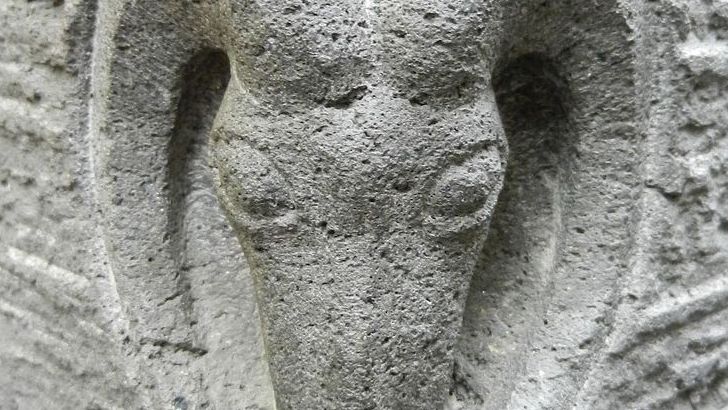The Population Boom That’s Reshaping the Beehive State

Utah is experiencing something extraordinary. Utah added just over 60,000 residents between July 1, 2023, and July 1, 2024, pushing its population past 3.5 million. That’s like adding an entire city the size of Murray every single year. It represents a growth of 1.8%, tying Texas for third among all U.S. states. When you look at those numbers, you start to understand the magnitude of what Utah is dealing with.
The statistics tell a remarkable story. Between 2014 and 2024, population of Utah increased by 565,286 (19.24%). Net migration has been a large driver for Utah in recent years, and it’s one reason why it led the nation in percentage growth between the 2010 and 2020 censuses. The state isn’t just growing – it’s becoming a magnet for people seeking opportunity and quality of life.
Where Everyone’s Moving and Why It Matters

Over 70% of them were along the Wasatch Front, composed of Salt Lake, Utah, Davis and Weber counties. This concentration creates unique challenges for both infrastructure and conservation efforts. Utah County had the most growth with 21,853 new residents, which accounted for 43.4% of the state’s total growth last year. Salt Lake County had the second-highest, with 12,113 people. It’s like watching a funnel effect where most of the state’s growth pours into just a few key areas.
The ripple effects are fascinating when you look at specific communities. 8 of the 10 fastest-growing cities on the Wasatch Front were in Utah County, led by Saratoga Springs with 7.9% and Highland with 7.8%. These aren’t just numbers on a spreadsheet – they represent thousands of families looking for homes, schools for their kids, and places to build their lives.
The Conservation Response That’s Breaking Records

While Utah’s population explodes, conservation efforts are scaling up dramatically. A total of 163,231 acres of wildlife habitat will be improved as a result of the projects funded through the 2025 conservation permits. That’s an area larger than Chicago getting habitat restoration work done. Over 168,000 acres across Utah were improved through WRI habitat projects in 2023-24.
The numbers get even more impressive when you zoom out. Since 2006, the WRI program has improved nearly 2.7 million acres of Utah’s landscapes through more than 2,800 restoration projects. This isn’t some small-scale effort – it’s a systematic approach to landscape restoration that’s been running for nearly two decades. The funding mechanisms are equally impressive, with conservation groups raising record amounts year after year.
Smart Money Driving Conservation Innovation

The financial commitment to conservation keeps growing stronger. During the April 2 meeting, DWR biologists presented 94 projects, 81 of which were then partially or fully funded by the conservation groups in attendance. This represents a sophisticated vetting process where conservation groups assess individual projects’ goals, benefits and costs before deciding where to invest their money.
Roughly 42 projects will be funded by the Endangered Species Mitigation Fund over the next fiscal year, with $4.4 million an increase from past years, due to an additional $1 million of ESMF restricted funding that was approved for spending by the Utah Legislature. The state legislature isn’t just talking about conservation – they’re putting serious money behind it. These aren’t token gestures but substantial investments in habitat restoration and species protection.
Housing Crisis Meets Creative Solutions

Utah’s housing challenge requires innovative thinking. Spencer Cox’s fiscal year 2025 budget recommendations include a $150 million investment in homebuyer assistance and infrastructure programs. But the real action is happening at the zoning level, where state and local officials are rethinking how communities can grow without sprawling across natural areas.
State leaders focusing on housing policy are working on a slate of recommendations for the Utah Legislature to consider next year, including drafting a statewide housing plan meant to pave the way for affordable, owner-occupied homes. The approach involves giving cities new tools rather than forcing changes from above. The new bill would allow cities and counties to implement a “density overlay” in a “housing-eligible zone” of their choice, giving city leaders another tool in their planning toolbelt to zone for certain, higher-density housing types.
The Zoning Revolution That’s Changing Everything

Utah is pioneering a gentler approach to housing reform. Instead of taking a more aggressive approach to force cities to zone for higher density or more affordable housing, lawmakers aimed to give cities more tools to create project areas that could leverage financing to encourage private developers to specifically build more affordable, owner-occupied, single-family homes. This collaborative approach avoids the political battles that have derailed housing reform efforts in other states.
The results speak for themselves. As of November, 66 cities reported to the League that a combined 190,000 housing units were zoned for and entitled — but not yet built. That’s a massive pipeline of potential housing that could help accommodate growth without requiring new infrastructure sprawl into undeveloped areas. The strategy focuses on density rather than expansion, which helps protect natural areas from development pressure.
Water Wars and Watershed Wisdom

The Great Salt Lake crisis has focused attention on watershed conservation like never before. Without a dramatic increase in water flow to the lake in 2023 and 2024, its disappearance could cause irreparable damage to Utah’s public health, environment, and economy. Summit Land Conservancy’s Utah Headwaters Initiative focuses on enhancing the agricultural and environmental resources within the headwaters of the Weber, Provo, and Bear River Watersheds.
Summit Land Conservancy’s Utah Headwaters Initiative focuses on enhancing the agricultural and environmental resources within the headwaters of the Weber, Provo, and Bear River Watersheds, all of which contribute to and feed the Great Salt Lake. The organization has been protecting land for over twenty years, with 53 permanent conservation easements and two preserves on over 15,420 acres of land from Weber County to Wasatch County.
Federal Partnerships and State Pushback

Utah’s relationship with federal land management creates both opportunities and tensions. Utah has invested over $100 million dollars in WRI and has been an active partner in improving watershed health and biological diversity, water quality and yield, and opportunities for sustainable uses of natural resources. In partnership with state, federal, local governments, conservation organizations, and private landowners, over 2.5 million acres of land have been treated.
However, new federal policies are creating friction. The federal government manages 37.4 million acres (~68%) of the land in Utah that’s larger than the entire state of Illinois. Of those federally managed lands, almost 22.8 million acres are managed by the BLM. State officials worry that new BLM rules will hinder active land management approaches that Utah has successfully used for restoration work. Utah currently manages 46 state owned parks, which are well visited, well managed and play a vital role in sustaining Utah’s tourism economy, providing over 600 jobs and 6 million visitors.
Economic Growth Without Environmental Sacrifice

Utah’s economy continues to diversify while supporting conservation efforts. As of July 2024, Utah’s labor market continues to show robust growth, with nonfarm payroll employment increasing by 2.8% over the past year. This growth translated into the addition of 48,500 jobs, bringing the state’s total job count to 1,754,600. The tech sector centered in Silicon Slopes keeps expanding, creating high-paying jobs that support both population growth and conservation funding.
Utah’s unemployment rate stands at 3.2%, which remains significantly below the national average of 4.3%. This economic strength provides the tax base that funds conservation programs and infrastructure improvements. When people have good jobs, they’re more likely to support long-term environmental investments and can afford to live in higher-density housing that protects open space.
The Growth Rate Reality Check

Recent data suggests Utah’s explosive growth might be moderating slightly. After a high of 1.96% in 2017, Utah’s overall population growth rate hovered around the 1.7% mark before dipping in 2023 and 2024. Demographer Emily Harris notes that we’re starting to see some slowing population growth, and we’re also seeing a lot of our indicator data starting to stabilize.
Net in-migration has been the largest driver of growth in recent years and accounted for 52% of the state’s total growth in 2024, which is down compared to past years. Net migration is heavily tied to Utah’s economic cycles and oftentimes broader U.S. trends. This moderation gives planners more time to implement sustainable growth strategies and conservation measures.
Looking Forward to Sustainable Solutions

Utah’s future depends on maintaining the delicate balance between growth and conservation. Projections estimate that Utah’s population may add anywhere from one million to two-and-a-half million new residents by 2050. Utah’s population could reach 4.1 million by 2034. These aren’t abstract numbers – they represent real families who will need homes, jobs, schools, and access to the natural amenities that make Utah special.
The state has proven that rapid growth and environmental protection aren’t mutually exclusive. Through innovative zoning reform, record conservation funding, strategic land acquisition, and collaborative partnerships, Utah is writing the playbook for sustainable growth in the American West. A short-term projection released in October 2024 shows that Utah will add over 500,000 residents over the next 10 years, growing the state’s population from 3.5 million to 4 million. As the population grows, driven by migration to the state, the demand for housing naturally increases.
The key question isn’t whether Utah can handle more growth – the state has proven it can. The question is whether it can continue balancing that growth with the conservation values that help make Utah such an attractive place to live in the first place. So far, the answer seems to be a resounding yes, but only if everyone stays committed to the collaborative approach that’s gotten them this far.






